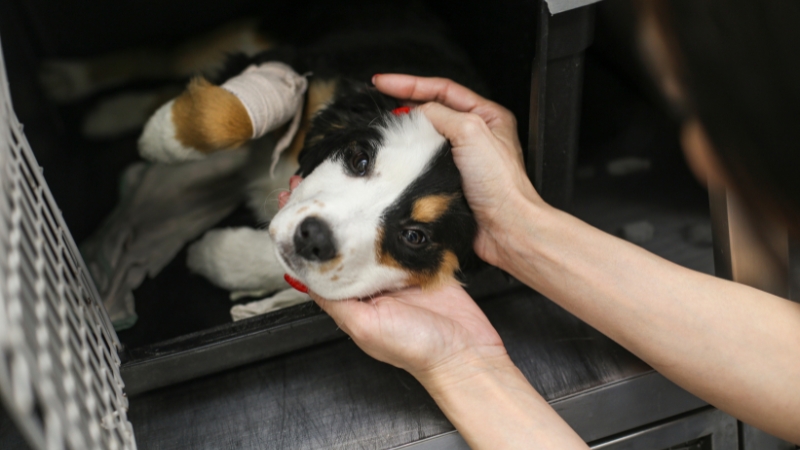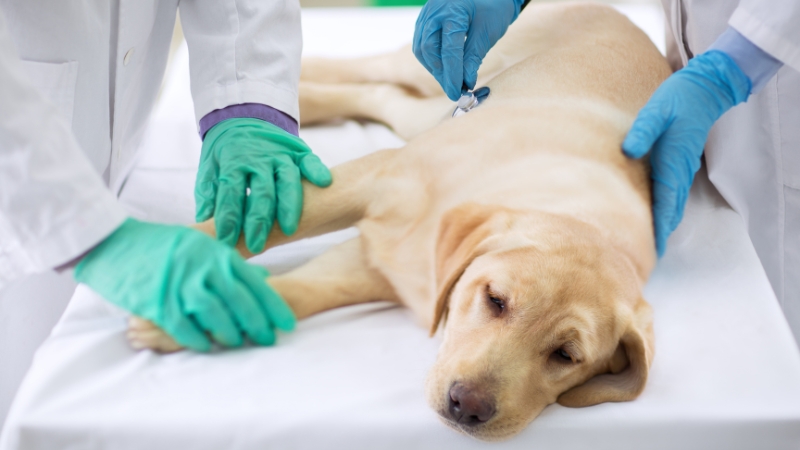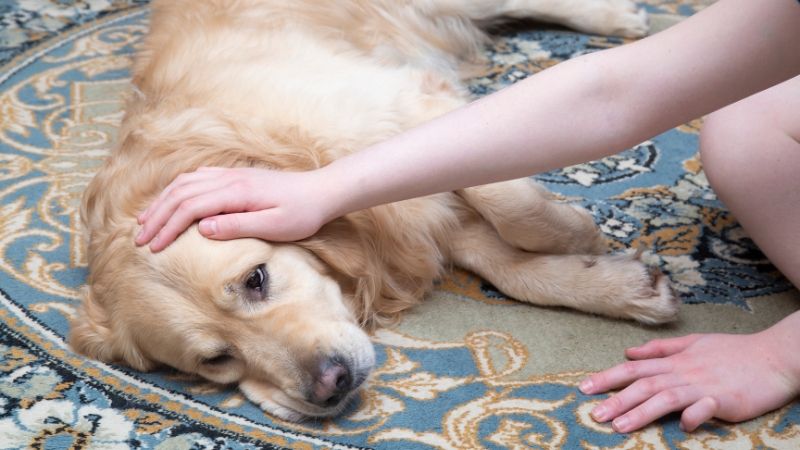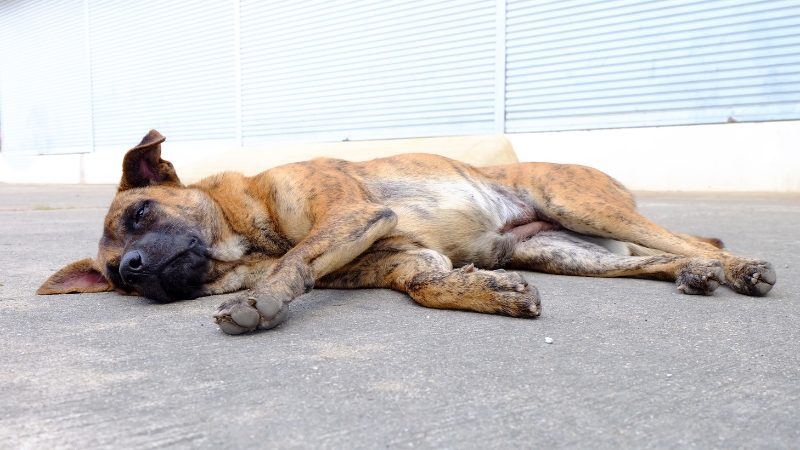Dog seizures first aid saves lives. Fast action helps protect dogs from harm. Seizures can happen without warning. Every dog owner must know what to do when a dog has a seizure.
This guide explains how to help a dog during a seizure, how to give seizure treatment for dogs at home, and when to call a vet for dog seizure events.
If a dog starts to twitch, collapse, or lose control, do not panic. Safe steps can reduce danger and support seizure recovery in dogs.
What Are Dog Seizures?

A dog seizure is a sudden, uncontrolled burst of brain activity. This can cause shaking, twitching, and, in some cases, unconsciousness. Some dogs fall over or stiffen.
Others may drool or paddle their legs. Dog epilepsy home care starts with knowing what a seizure looks like.
Seizures can last from a few seconds to several minutes. Some dogs have clusters of seizures in one day. There are many causes, including epilepsy, toxins, and brain trauma. The first response to dog seizures depends on the symptoms and duration.
Symptoms of Dog Seizures
Dog seizure symptoms can vary. Some begin with subtle signs. A dog may seem dazed or appear to be staring into space. Others fall and start convulsing.
Common signs:
The most crucial seizure safety tip is to observe the dog without touching it. Keep calm. Note the symptoms and length of the episode.
Causes of Seizures in Dogs
View this post on Instagram
A variety of factors can trigger seizures in dogs. Epilepsy is a common cause. Other reasons include poisoning, liver disease, kidney failure, blood sugar drops, or trauma. Sometimes the cause is unknown.
Veterinarians use blood tests, scans, and a medical history to determine the cause. Accurate diagnosis helps plan seizure treatment for dogs at home. Dog epilepsy home care begins after the vet has ruled out life-threatening causes.
What To Do When a Dog Has a Seizure
Quick action is vital. Stay calm and remove objects nearby. Dogs may hurt themselves during convulsions.
Steps:
- Do not touch the dog during the seizure. Keep your hands away from your mouth.
- Clear the area. Move furniture and remove hazards.
- Note the time. Record how long the seizure lasts.
- Keep lights dim and noise low.
- Do not try to hold the dog still. Let the seizure end naturally.
Most seizures last less than 2 minutes. If it continues longer than 5 minutes, this is an emergency.
How to Help a Dog During a Seizure
After a seizure ends, the dog needs peace and gentle care. Speak in a soft voice and maintain quiet in the area. Dogs may be confused or frightened. Let the dog rest in a safe, dimly lit space where loud noises and bright lights are not present.
Check the body for signs of injury. Dogs can hit furniture or walls during convulsions. Bleeding, bruising, or limping requires vet evaluation.
Do not offer food or water right away. Wait until the dog is alert and stable. Sudden swallowing attempts may lead to choking.
Some dogs pace or appear blind for several minutes. Others may cling to the owner or hide. Stay calm. Sit nearby and allow space without forcing interaction.
Dogs need time to regain awareness. Seizure recovery in dogs can take anywhere from a few minutes to over an hour. If strange behavior persists for longer than one hour, contact your veterinarian.
Seizure Treatment for Dogs at Home
Seizure treatment at home begins after a complete vet evaluation. Not all seizures require medication. If treatment is necessary, the goal is to achieve long-term control.
Most dogs take daily drugs to prevent future seizures. The most prescribed options include phenobarbital and potassium bromide.
Phenobarbital is often the first drug given. It helps many dogs but may cause drowsiness and liver strain. Potassium bromide is effective when used alone or in combination.
It can lead to a bigger appetite and slower reflexes. Levetiracetam is a newer option with fewer side effects. It must be given more often due to its short half-life.
Common Home Medications
Medication Name
Use Case
Side Effects
Phenobarbital
Long-term seizure control
Drowsiness, liver stress
Potassium Bromide
Used with phenobarbital or alone
Increased appetite, sedation
Levetiracetam
Fewer side effects
Shorter half-life
Never make dose changes without vet approval. Missed or sudden skipped doses can trigger seizures.
Home care also includes daily monitoring, avoiding seizure triggers, and maintaining a calm and steady environment for the dog.
Canine Seizure Emergency Steps

Some seizures are life-threatening. If a dog convulses longer than 5 minutes or has more than one episode in 24 hours, immediate help is needed. The brain may overheat and swell. Extended seizures also risk long-term damage.
If the dog does not wake up fully after a seizure or exhibits unusual behavior, such as unresponsiveness or paralysis, prepare for emergency transport. Keep a pet emergency bag packed with vet records, medications, and a towel or blanket. Use it if fast action is needed.
Dog seizure safety tips are critical during panic. Keep the vet’s phone number on your refrigerator or mobile device. Have a written plan for what to do and who to call. Share it with family or dog sitters.
Dog Epilepsy Home Care Tips
Daily care helps prevent seizures and gives dogs a safer, more stable life. A peaceful home with a routine is the best first step. Avoid high-stress settings. Loud sounds, bright lights, or crowding can increase the risk of seizures.
Keep a seizure log. Use paper, a spreadsheet, or a phone app. Record the date, time, symptoms, length, and events before and after. Look for patterns. Triggers may include changes in diet, missed medications, or overstimulation.
Follow all vet instructions. Give medication at the exact times each day. Feed meals on a schedule. Ask your veterinarian if a high-fat, low-carb diet would be beneficial. Epilepsy-friendly foods may reduce seizure frequency.
Make the house safe—lay non-slip rugs on hard floors. Keep sharp corners padded. Block stairs if needed. Do not leave a dog alone in high-risk areas. Use baby gates or closed doors for safety.
Emergency vs Routine Seizure Care
Type of Care
Signs
Response
Emergency
Prolonged seizure, no recovery, injury
Call the vet immediately, and prepare transport
Routine
Short seizure, full recovery, no injury
Record event, provide comfort, and monitor
Some dogs also respond well to extra sleep, calm playtime, and stable weather routines. Avoid heat and exhaustion.
Ask the vet how often to return for blood tests or checkups. Adjust care plans based on results and seizure logs.
When to Call a Vet for a Dog Seizure

Never delay vet contact after a first seizure. A one-time event can still signal danger. If the dog is under six months or over six years old, the cause may be serious. Puppies and senior dogs are more vulnerable to complications.
Exposure to toxins also demands immediate help. Ingesting chocolate, rat poison, certain plants, or cleaning fluids may lead to seizures. Do not wait. Call a vet even if symptoms stop. Hidden damage could still affect brain or organ function.
Watch for signs of illness such as vomiting, fever, trouble breathing, or weakness. These may signal a deeper condition. Early veterinary contact improves diagnosis and helps avoid future emergencies. Dogs with epilepsy often live long, stable lives when care starts early and stays consistent.
Preventing Future Seizures
Seizures often return. Prevention depends on the cause.
Track patterns. Avoid stress triggers. Administer medicine at the same time each day. Keep records for vet visits. Ask the vet about routine blood tests to monitor the effects of your medication.
Seizure Triggers To Avoid
Trigger
Risk Level
Notes
Flashing lights
High
Avoid TV flicker, camera flashes
Sudden loud sounds
Medium
Fireworks, storms
Missed medication
High
Skipping doses can trigger seizures
Blood sugar swings
Medium
Feed regular meals
Do’s and Don’ts During Dog Seizures
- Stay calm – Helps reduce panic in both you and your dog.
- Move hazards away – Clears the area to prevent injury during convulsions.
- Time the seizure – Gives your vet important information about the episode’s severity.
- Record a video if safe – Helps your vet with accurate diagnosis and future treatment.
- Comfort your dog after – Eases recovery and provides emotional support.
- Don’t touch the mouth or face – Risk of accidental bites even from a gentle dog.
- Don’t hold the dog down – Increases stress and may cause injury.
- Don’t offer food or water – Choking is a serious risk during and right after a seizure.
- Don’t leave your dog alone – Stay nearby to monitor recovery and watch for further issues.
- Don’t wait too long to call the vet – Delays in seeking help can lead to complications or emergencies.
Stories From Dog Owners

Maria from Chicago shared her story. Her Labrador had seizures once a month. After keeping a log and adjusting the diet, episodes dropped.
“I felt helpless, but tracking helped my vet find the right mix. He is stable now.”
John in Texas said, “I panicked during the first seizure. My vet guided me through the process step by step. Now I have a plan taped to the fridge.”
Angela from Ohio explained, “Our terrier had his first seizure on Christmas morning. We followed the safety steps and called the vet right away. With medication, he has not had one since.”
Mark in Florida added, “We almost lost our beagle. He had cluster seizures. Emergency care and strict routine saved him.”
Rita from Oregon said, “My shepherd’s seizures got worse in the summer heat. Now we walk early and keep indoors after noon. It made a difference.”
Conclusion
@teampdsa It can be very scary if your pet is having a seizure, especially for the first time. The best thing you can do is keep calm and follow this advice from our vets 👩⚕️ Come back tomorrow for part two 2️⃣ [Visual description: A PDSA vet wearing pink scrubs speaks to camera in a Pet Hospital consultation room.] #PDSA #VetTok #PetTok #PetHealth #Seizure #Seizures #Epilepsy #PetEpilepsy #DogHealth #CatHealth ♬ original sound – PDSA 🐾
First aid for dog seizures must be learned before an emergency occurs. A calm, informed owner can reduce the risk of injury, shorten recovery time, and help their dog live a better life.
Know the signs. Know the steps. Have a plan. Seizure recovery in dogs is possible with home care, medication, and support.
Follow safety steps and contact a veterinarian when necessary. Dogs can live well with seizures when they are protected by informed care.







